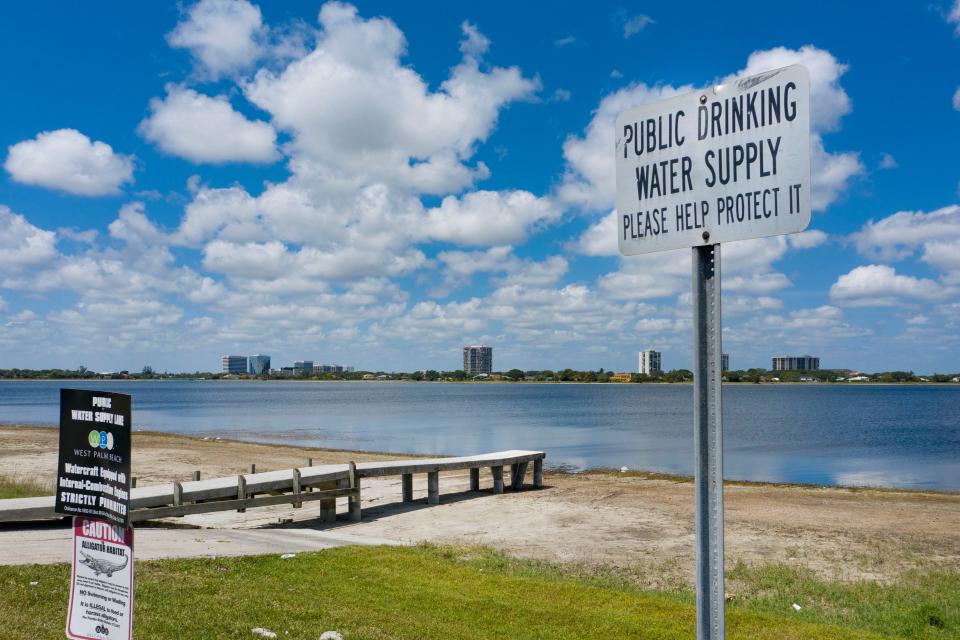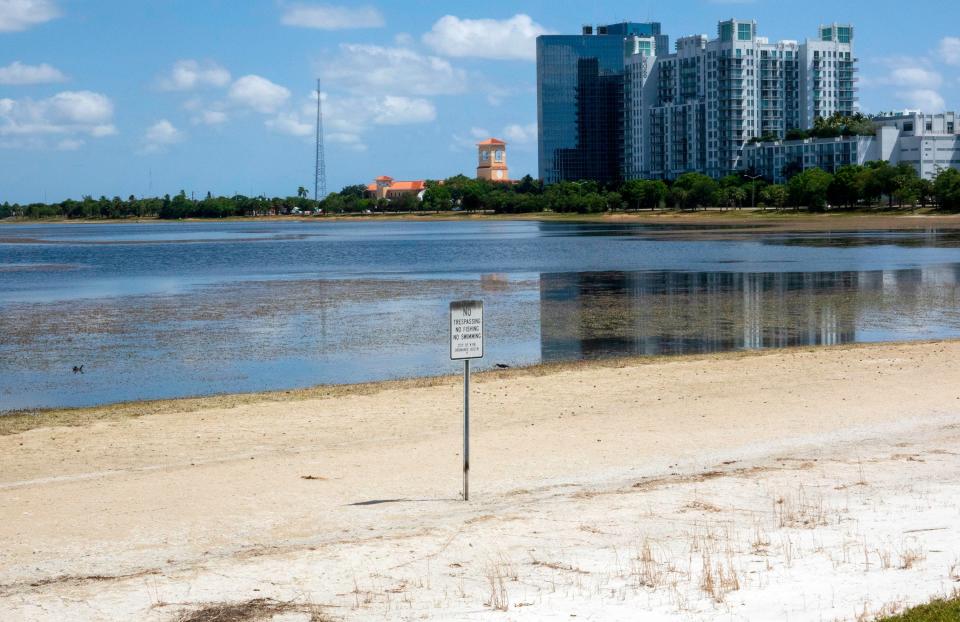Palm Beach eyes ocean as it weighs options for water supply

As Palm Beach continues to explore options for its water supply ahead of the end of its contract with the city of West Palm Beach in 2029, attention has shifted to seawater.
Town staff is working to calculate the possible footprint of a desalination plant next to the Intracoastal Waterway to process the water, as well as the feasibility of horizontal saltwater wells.
The wells option was among new alternatives put forward by an engineering consultant, after feedback from residents to earlier presentations, at last month's Town Council meeting. The other alternatives were a desalination treatment plant south of the Port of Palm Beach, a similar plant in Riviera Beach adjacent to the Intracoastal and a transmission pipe in the Intracoastal. The formation of a town-owned water utility also was on the list.
Water disinfection process: West Palm will temporarily change disinfection process for drinking water
No smoking: Palm Beach ban on cigarette smoking at public parks and beaches gets initial OK
Palm Beach staff to look at footprint for desalination plant, saltwater wells
After discussions by council members that included concerns about the challenges the town would face in getting permission to build in Riviera Beach or West Palm Beach, Public Works Director Paul Brazil proposed narrowing the focus. His suggestion: "We work up the square footage that would hypothetically be required for the plant that we would need and (determine) if the horizontal wells would (in fact) work."
With that data in hand, Brazil said, officials could then figure out "how much Intracoastal front property we would need to be able to do a desalinization plant in any location."
Town Council President Maggie Zeidman on Tuesday told the Daily News that using seawater probably is "a non-starter, but I want to know for sure because this is our opportunity to really delve into this and figure out what’s best for the people of this island.
"We don't want to leave any stone unturned so we want the answers. Can it be done?"
Consultant's update had six options that had been researched
At the July 12 meeting, the Town Council received an update about the water feasibility study it had commissioned from national engineering firm Kimley-Horn. That study presented six options that had been researched.
Three of those, labeled as needing "ongoing study," include:
• Continuing the current water-supply contract with the city of West Palm Beach at a cost of $47 million to $70 million;
• Continuing the contract with West Palm and collaborating on a membrane-technology upgrade at its treatment plant, which would cost $547 million to $821 million, with the town paying for a third of the cost ($182 million to $273 million);
• Contracting with the city of Lake Worth Beach to provide water for $263 million to $395 million. The costs would include pipeline and treatment infrastructure.
The other three options, labeled as requiring "no further study," are:
• A town-owned desalination plant at Phipps Park with a projected cost of $352 million to $529 million;
• A town-owned facility on Quadrille Boulevard in West Palm Beach, which would use so-called "nano-membrane" technology at a cost of $269 million to $405 million;
• A contract with Palm Beach County at a cost of $366 million to $443 million.
The costs cover such items as treatment and pipeline infrastructure, utility formation and, in the case of the county option, impact fees.
At the council meeting, Mayor Danielle Moore welcomed the discussion surrounding the desalination alternatives, noting that "if we don't do it, we'll be accused of not doing due diligence."
The town's search for new options took on added urgency last year when the toxin cylindrospermopsin, which is produced by blue-green algae, was detected in its drinking water.
The toxin was first was discovered in low levels on May 3, 2021, and subsequent test results returned two weeks later topped the threshold considered harmful for vulnerable populations. West Palm officials did not notify Palm Beach or issue a drinking water advisory until May 28.
Town officials criticized West Palm Beach staff for that delay. West Palm Beach officials subsequently created a panel of water-quality experts to review its water supply.

Palm Beach would face scrutiny from regulatory agencies for seawater option
Any desalination option in Palm Beach would require the town to form its own utility company. The costs have not yet been determined, Zeidman — who also sits on the Public Works Committee — told the Palm Beach Daily News.
But beyond the costs, Zeidman said, the town is looking at the feasibility of getting the required permits for a desalination option.
"Many regulatory agencies will need to weigh in on this," she said, including the Department of Environmental Protection, the Fish and Wildlife Conservation Commission and the Florida Inland Navigation District.
She noted that working with West Palm to upgrade its plant to the membrane option is the simplest choice, "but we have to be on the same page. We can't go through cyanobacteria every year during the summer months and subsequent treatment with chlorine."
But, she said, "the people in their government want the same thing the people in our government want — safe water to drink."
West Palm Beach relies on surface water that flows 20 miles from Lake Okeechobee through canals and wetlands to Lake Mangonia and Clear Lake, just west of the city's downtown.
Palm Beach council member stresses membrane technology for water purity
Council member Bobbie Lindsay, who chairs the Public Works Committee, told the Daily News that "the desire of the council at this point is that whatever option we select would have to include a membrane-based state-of-the-art technology for getting clean water."
While minerals will have to be added back into the water, the process cleans the water, including filtering out salt — in the case of desalination — along with antibiotics and other pollutants that are not yet regulated, such as PFAS (per- and polyfluoroalkyl substances), otherwise known as "forever" chemicals, Lindsay said, noting that "the entire world" is moving in the direction of membrane technology.
If the island opts to continue its contract with West Palm Beach, Lindsay said she thinks the town should be a partner rather than a customer. A new deal would mean a relationship for the next 30 years, so "we need to have a seat at the table," she said.
The Public Works Committee is scheduled to meet Thursday, when it is expected to hear details on the footprint of a possible desalination plant next to the Intracoastal Waterway and the feasibility of horizontal saltwater wells, Zeidman said. The committee will bring that information to the council in either September or October, she added.
Carol Rose is a journalist at the Palm Beach Daily News, part of the USA TODAY Florida Network. You can reach her at crose@pbdailynews.com. Help support our journalism. Subscribe today.
This article originally appeared on Palm Beach Daily News: Palm Beach water supply: Is ocean an option? Town Council exploring
